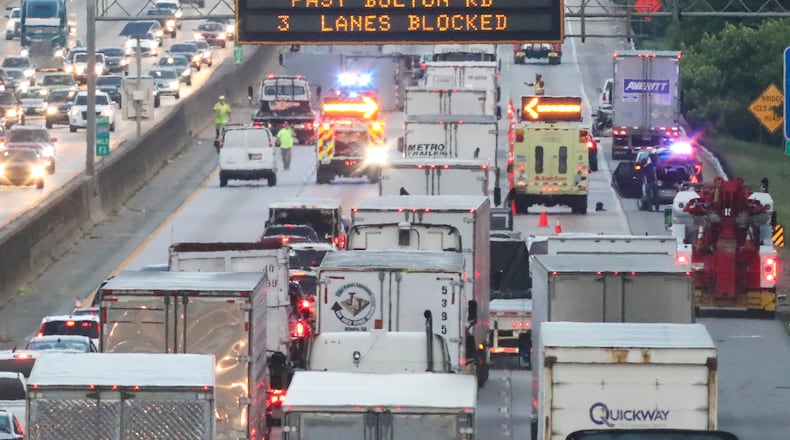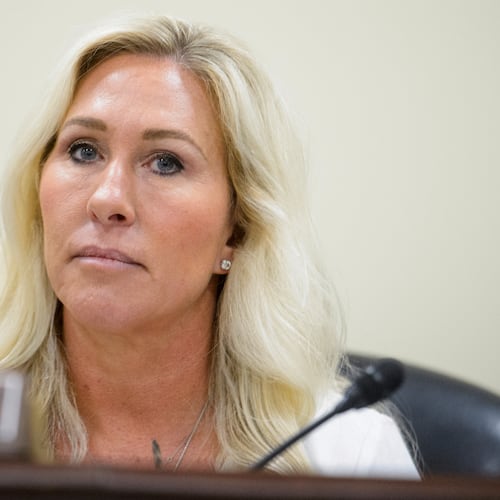Business is booming at the Port of Savannah, which means more trucks are coming to Georgia highways that are already crawling with them.
Now Georgia lawmakers are looking for ways to keep freight moving and limit the impact of trucks on other motorists in metro Atlanta and across the state. They hope to route as much freight as possible onto trains, while improving the state’s highway network for the benefit of truckers and commuters alike.
But such efforts may cost billions of dollars. And the number of trucks on Georgia highways is still likely to rise.
"If we do nothing at all, we won't be able to sustain it," state Sen. Brandon Beach, R-Alpharetta, said in an interview this week.
Beach is a co-chairman of a legislative committee that’s studying ways to accommodate increased freight traffic. Members met for two days this week in Savannah, where they got a firsthand look at the booming port.
The facility handled 4.5 million 20-foot-equivalent container units in fiscal year 2019 — up 7.3% from the previous year. It had its busiest month ever in August, when it handled 437,750 units — up 16.5% over the same month last year.
It’s now the fourth-largest port in the nation, and it expects to keep growing as it prepares to deepen the Savannah harbor.
The port’s boom is good economic news for Georgia and metro Atlanta — a major warehouse and distribution hub. But it’s also taxing the state’s highway system. Already more than 20,000 trucks a day travel some metro Atlanta highways, and the volume is expected to increase steadily in coming decades.
“Sometimes (I-285) is nothing but 18-wheelers,” Beach said. “We can’t take much more than that.”
Georgia is already taking steps to accommodate more truck traffic. In 2016, then-Gov. Nathan Deal announced a 10-year, $10 billion road construction plan that includes projects that will help the movement of freight. Among them:
- Forty miles of new trucks-only lanes on I-75 between Macon and McDonough.
- New I-20 interchanges at I-285 east and west of Atlanta.
- A new I-16/I-95 interchange and the widening of I-16 from I-95 to I-516 in Savannah.
The Georgia Department of Transportation also has been widening state highways such as U.S. 441 to accommodate freight traffic.
Meanwhile, the port is trying to boost the amount of freight shipped by rail — currently only one out of five containers is carried by train.
It’s building a $220 million rail yard that can accommodate longer trains. And it’s reduced the time it takes to get freight from ships to trains from what used to take two to three days to less than 24 hours, making rail transport more competitive.
But more and longer trains also will pose problems for motorists stuck waiting for them to pass.
"We love the trains," state Rep. Kevin Tanner, R-Dawsonville, said at Thursday's meeting. "But we have people who are not able to get to their homes and neighborhoods."
Lawmakers are wrestling with such trade-offs as they consider ways to improve the movement of freight. Final recommendations likely are months away.
But any solutions likely will be expensive. GDOT’s most recent freight plan identified up to $6 billion in rail improvements and $9.5 billion in highway improvements.
“We know we have work to be done from the state perspective,” said Tanner, a co-chairman of the committee. “It still comes down to there’s still not enough money.”
About the Author
Keep Reading
The Latest
Featured




